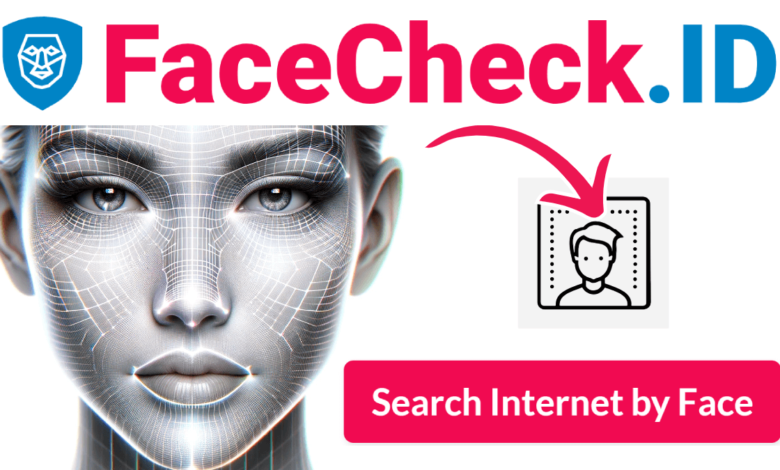FaceCheck ID: The Ultimate Guide to Secure Identity Verification

FaceCheck ID In today’s fast-paced digital world, the need for robust identity verification systems has never been more critical. With the rise of online transactions, remote working, and digital services, ensuring the authenticity of individuals is paramount. This is where FaceCheck ID comes into play, revolutionizing the way we verify identities with its advanced facial recognition technology.
Understanding FaceCheck ID Technology
FaceCheck ID operates on sophisticated facial recognition algorithms, leveraging biometric data to accurately authenticate individuals. Unlike traditional identification methods such as passwords or PINs, which can be forgotten, stolen, or forged, facial recognition offers a highly secure and convenient solution. By analyzing unique facial features, such as the distance between eyes, nose shape, and jawline, FaceCheck ID creates a digital signature that is virtually impossible to replicate.
The key components of FaceCheck ID systems include high-resolution cameras and sensors capable of capturing detailed facial images. These images are then processed using advanced algorithms to extract biometric data points, which are encrypted and securely stored. One of the primary advantages of FaceCheck ID technology is its ability to adapt to varying environmental conditions, ensuring reliable verification across different lighting conditions and camera angles.
Advantages of FaceCheck ID
The adoption of FaceCheck ID offers numerous benefits, both for businesses and end-users alike. From enhanced security measures to improved user experience, the advantages of implementing FaceCheck ID are manifold. By replacing traditional ID verification methods with facial recognition technology, businesses can significantly reduce the risk of identity theft and fraudulent activities.
For end-users, FaceCheck ID offers a seamless and convenient authentication experience. Gone are the days of remembering complex passwords or carrying physical IDs. With FaceCheck ID, all it takes is a quick scan of the face to gain access to secure areas, complete transactions, or verify identities. This not only saves time but also enhances user satisfaction, leading to increased trust and loyalty towards the brand.
Applications of FaceCheck ID
The versatility of FaceCheck ID technology extends across various industries and sectors, offering tailored solutions to meet specific needs. In the business sector, FaceCheck ID is widely used for employee attendance tracking and access control systems. By integrating facial recognition technology into existing infrastructure, businesses can streamline administrative processes and enhance security measures.
Financial institutions have also embraced FaceCheck ID as a means of securing online banking services and preventing fraudulent transactions. With the rise of digital banking, ensuring the authenticity of users has become paramount, and FaceCheck ID provides a robust solution to address this challenge. By verifying identities in real-time, financial institutions can minimize the risk of unauthorized access and fraudulent activities, safeguarding both their assets and reputation.
Implementing FaceCheck ID Systems
The implementation of FaceCheck ID systems requires careful planning and consideration to ensure seamless integration with existing infrastructure. Businesses must assess their specific needs and objectives, taking into account factors such as scalability, compatibility, and regulatory compliance. Additionally, training and onboarding procedures should be conducted to familiarize employees with the new technology and address any concerns or misconceptions.
Customization options are also available to cater to the unique requirements of different industries and sectors. Whether it’s adapting facial recognition algorithms to accommodate diverse demographics or integrating additional security features, FaceCheck ID systems can be tailored to meet specific needs. This flexibility allows businesses to optimize the performance and effectiveness of FaceCheck ID technology, maximizing its benefits and ROI.
Addressing Concerns and Privacy Issues
While FaceCheck ID offers unparalleled security and convenience, it also raises concerns regarding privacy and data protection. As with any biometric technology, ensuring the responsible and ethical use of facial recognition is paramount. Companies must implement stringent data protection measures to safeguard biometric data from unauthorized access or misuse.
To address these concerns, FaceCheck ID systems adhere to strict regulatory requirements and industry standards, such as GDPR compliance and encryption protocols. Additionally, ethical considerations, such as obtaining user consent and providing opt-out options, are integral to maintaining trust and transparency. By prioritizing user privacy and data security, companies can mitigate potential risks and ensure the responsible deployment of FaceCheck ID technology.
Case Studies: Success Stories with FaceCheck ID
Numerous businesses and organizations have already experienced the transformative benefits of FaceCheck ID firsthand. From streamlining operations to enhancing security measures, the real-world use cases of FaceCheck ID are diverse and impactful. Corporate examples demonstrate how FaceCheck ID has revolutionized employee authentication and access control systems, leading to increased efficiency and productivity.
Government implementations of FaceCheck ID have also proven successful in various applications, such as passport verification and voter identification. By leveraging facial recognition technology, government agencies can streamline administrative processes and improve the accuracy of identity verification. This not only enhances national security but also promotes trust and confidence in government services.
Future Trends in FaceCheck ID Technology
Looking ahead, the future of FaceCheck ID is brimming with potential, driven by advancements in technology and evolving industry trends. As facial recognition algorithms become more sophisticated and accurate, the applications of FaceCheck ID will continue to expand into new industries and sectors. Integration with artificial intelligence and machine learning will further enhance the capabilities of FaceCheck ID systems, enabling more personalized and adaptive user experiences.
Moreover, as the demand for secure identity verification solutions grows, so too will the market for FaceCheck ID technology. Market trends indicate a steady increase in adoption rates across various industries, fueled by the need for enhanced security measures and regulatory compliance. With ongoing innovation and development, FaceCheck ID is poised to remain at the forefront of identity verification technology, shaping the future of digital authentication.
Challenges and Limitations
Despite its numerous benefits, FaceCheck ID technology is not without its challenges and limitations. Accuracy and reliability concerns persist, particularly in scenarios with varying environmental conditions or demographic factors. Compatibility issues with diverse hardware and software platforms can also pose challenges during implementation and integration.
Additionally, the potential vulnerabilities to hacking attacks and data breaches highlight the importance of robust cybersecurity measures. Companies must invest in comprehensive security protocols to safeguard biometric data from unauthorized access or exploitation. Addressing these challenges requires ongoing research and development efforts to improve the accuracy, reliability, and security of FaceCheck ID technology.
Regulatory Framework and Compliance
As with any biometric technology, FaceCheck ID systems are subject to regulatory requirements and compliance standards. Companies must adhere to legal guidelines and industry regulations governing the collection, storage, and use of biometric data. This includes obtaining explicit consent from users, implementing data encryption protocols, and providing transparent privacy policies.
Collaboration with regulatory authorities is essential to ensure compliance with international data protection laws, such as GDPR, CCPA, and HIPAA. By staying abreast of evolving regulations and standards, companies can mitigate legal risks and maintain the trust and confidence of users. Moreover, industry-wide initiatives and partnerships can facilitate knowledge-sharing and best practices in responsible biometric data management.
Cost Analysis and Return on Investment
The implementation of FaceCheck ID systems involves various costs, including initial setup expenses, hardware and software investments, and ongoing maintenance and support fees. However, these costs must be weighed against the long-term benefits and return on investment (ROI) of adopting FaceCheck ID technology. Studies have shown that the savings from fraud prevention and improved operational efficiency can far outweigh the initial expenses.
Calculating the ROI of FaceCheck ID implementation requires a comprehensive analysis of both tangible and intangible factors. Tangible benefits include cost savings from reduced fraud losses, improved productivity, and operational efficiency gains. Intangible benefits, such as enhanced brand reputation, customer trust, and loyalty, are also significant contributors to ROI.




